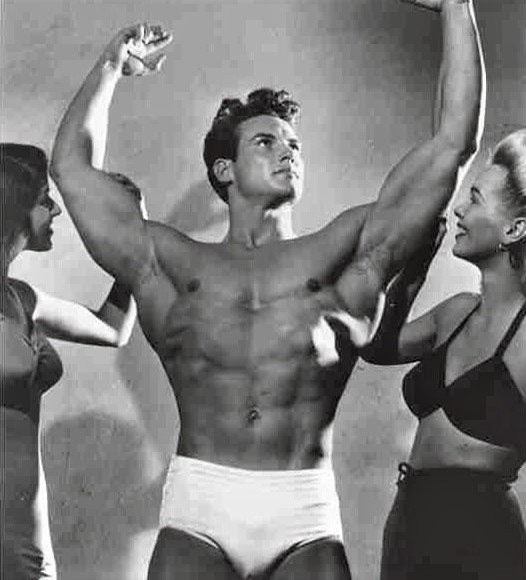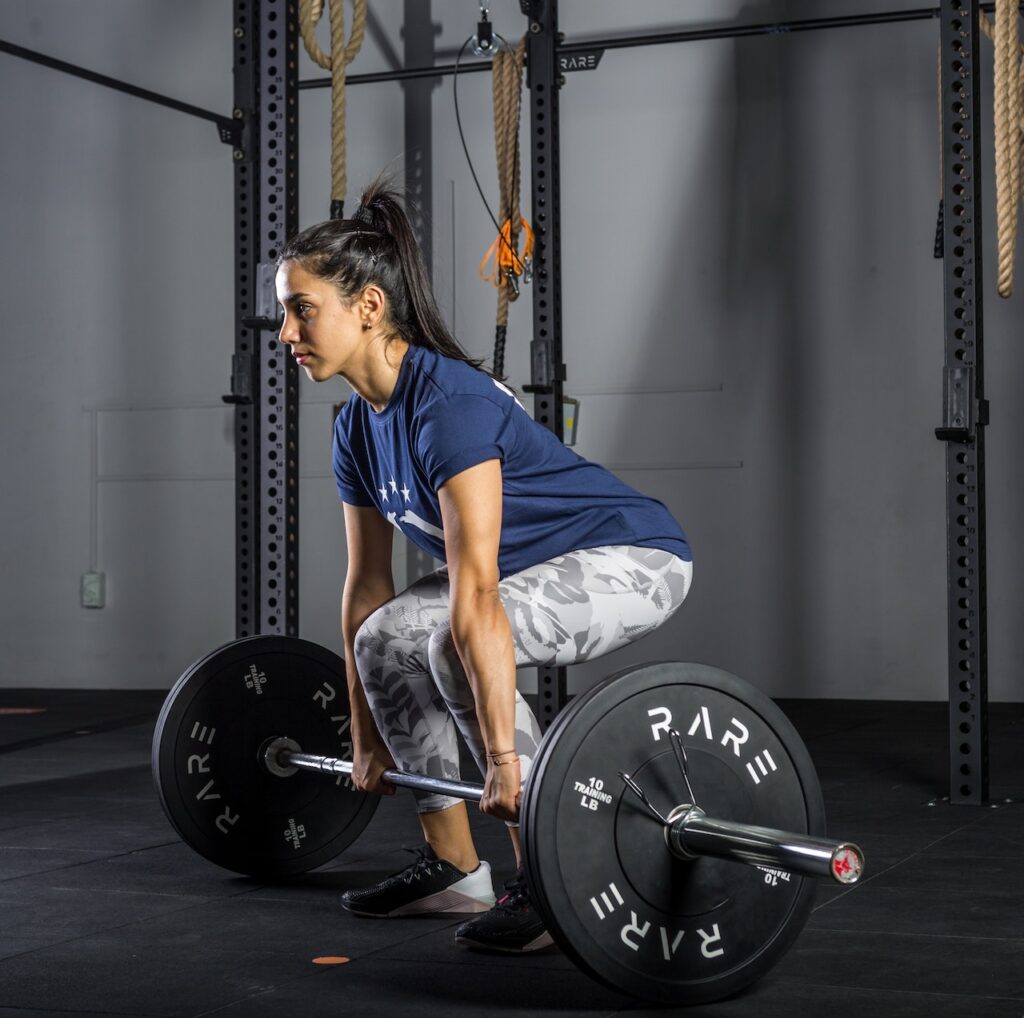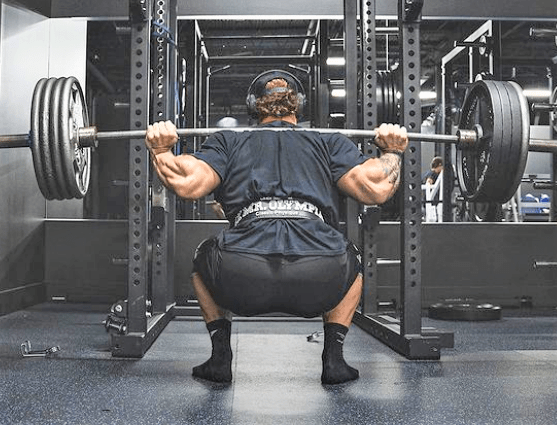Classic Physique Mr. Olympia Chris Bumstead / Instagram
Want to know about full body workouts? Buckle into your time machine and set it for 1950. TV is still a novelty. Doo-wop is the hottest music. And bodybuilders are training their entire physiques in every workout. This may sound ridiculously quaint, but weight-trainers then didn’t follow split routines. The break-it-up revolution occurred in the 1960s. Before then, greats like 1950 Mr. Universe Steve Reeves earned their Herculean builds while hitting every body part in every workout. Despite lacking modern nutritional and technological advantages, the legends of six decades ago still attained physiques that are admired today. They were the original classic physiques.
Let’s see why full body workouts worked then and how they can still work for you now.
FULL BODY WORKOUT CLASSICS
So here we are in 1950, and 24-year-old Steve Reeves is toiling in a gym in Oakland, California, preparing to win the Mr. Universe. Reeves and his contemporaries focused on functional strength, decades before anyone called it that. You’ll see a lot of cleaning and overhead pressing and unique exercises like Jefferson squats (a favorite of Kai Greene today), free-weight hack squats, and pullover-and-presses for triceps. Routines consisted mostly of compound lifts.

Let’s compare the physiques then with the those of now. Today’s best bodybuilders are, of course, much larger, especially when it comes to hamstrings, back density, and lower pecs. Those areas weren’t prioritized then. But, relatively speaking, 60 years ago there was a greater focus on overall proportionality—that Reeves-look that corresponds to today’s classic physique competitors like Chris Bumstead. In part, this came about via all those functional-strength and compound exercises. For example, Steve Reeves didn’t earn his famous shoulders with lateral raises. Instead, delts were worked thrice weekly via not just standing overhead presses but also by assisting in lifts like incline presses and barbell rows.
(For much more on Reeves’ workouts, check out: Steve Reeves and Shape Training)
FULL BODY WORKOUT SCHEDULE
In a full-body routine, you simply can’t exhaust each bodypart with 12-20 sets for that bodypart. If you tried, the workout might last eight hours. So you need to do sets that hit more than one bodypart. Deadlifts, for example, work many areas. In our routines, most of the exercises are compound. You’ll also need to push sets to failure. That’s the only shot you have at stimulating growth with such few sets per muscle. Also, never do the same exercises in consecutive workouts. So if you train on Monday, Wednesday, and Friday, do completely different exercises each day and then repeat the sequence the next week. This lets you incorporate greater variety and avoid strength plateaus.
The full body system stretches your workload for each bodypart over multiple days. So, if you do two or three full-body sessions per week, you can total as many weekly sets per bodypart as you would doing a typical split routine that hits each muscle only once weekly. And you’ll spend a lot less time going to the gym—which is the system’s greatest advantage. Full body isn’t an ideal long-term system for most advanced bodybuilders, but when used occasionally it is effective. You do less volume per bodypart in each workout and you do fewer overall workouts, but you also hit each bodypart more frequently. This unique stress can trigger growth. And the schedule can provide a revitalizing break from daily trips to the gym.

FULL BODY WORKOUT BASICS
◾️ All body parts are trained in the same workout.
◾️ Full body workouts are done twice or thrice weekly with at least 48 hours between workouts.
◾️ Aim for 35-45 total sets per workout.
◾️ Full body is an ideal beginner’s system.
◾️ If you’re an advanced bodybuilder, do full body when time prevents you from performing your typical split, when returning from an extended layoff, or for occasional variety.
FULL BODY WORKOUT TIPS
◾️ Focus on compound exercises for larger body parts.
◾️ Because so many diverse bodyparts are trained each session, staggered sets work well with full body workouts and can trim the overall gym time.
◾️ Supersets also cut down on the overall time.
◾️ Circuit training is another way to work the full body in less time by eliminating between-set rest.
◾️ Impart variety in your full body workouts by doing different exercises in each weekly workout.
ABOUT OUR FULL BODY WORKOUTS
Each of our two full body workouts has 12 exercises, none of which repeat. Alternate these two workouts. For example, #1 on Monday and #2 on Thursday. If you train thrice weekly (for example, Monday-Wednesday-Friday), add a third routine with another dozen different exercises.
FULL BODY WORKOUT #1
Squat — 4 sets x 8-12 reps
Deadlift — 4 sets x 8-12 reps
Lying Leg Curl — 4 sets x 10-12 reps
Barbell Incline Press — 3 sets x 8-12 reps
Dip — 3 sets x 8-12 reps
Barbell Row — 3 sets x 10-12 reps
Front Pulldown — 3 sets x 10-12 reps
Dumbbell Shoulder Press — 4 sets x 10-12 reps
EZ-bar Curl — 4 sets x 10-12 reps
↕️ superset with
Standing Calf Raise — 4 sets x 12-15 reps
Lying Triceps Extension — 4 sets x 10-12 reps
↕️ superset with
Knee Raise — 4 sets x 12-15 reps
FULL BODY WORKOUT #2
Leg Press — 4 sets x 8-12 reps
Stiff-leg Deadlift — 4 sets x 10-12 reps
Hack Squat — 3 sets x 8-12 reps
Bench Press — 4 sets x 8-12 reps
Pull-up — 3 sets x 10-12 reps
T-bar Row — 3 sets x 10-12 reps
Barbell Shoulder Press — 4 sets x 10-12 reps
Upright Row — 3 sets x 10-12 reps
Preacher Curl — 4 sets x 10-12 reps
↕️ superset with
Seated Calf Raise — 4 sets x 12-15 reps
Pushdown — 4 sets x 10-12 reps
↕️ superset with
Machine Crunch — 4 sets x 12-15 reps
















































